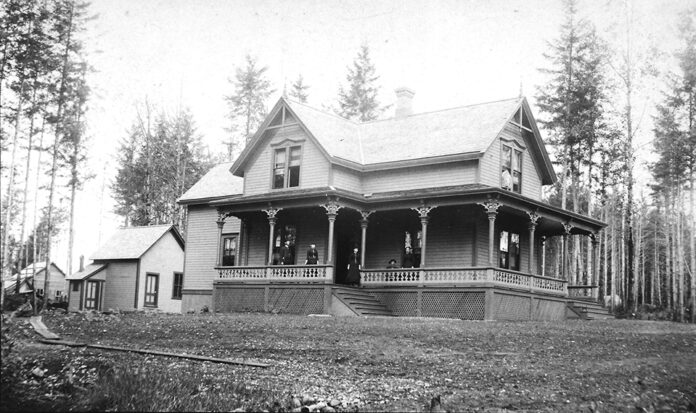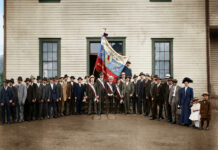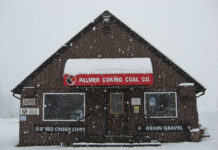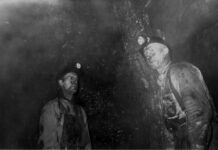After Victor Tull’s 1880 discovery of the McKay coal seam in the Green River Gorge, also found two miles west in what would become Black Diamond, two companies began work building mining towns. Above the Green River, the Oregon Improvement Company opened its mines and named their town Franklin.
Meanwhile, in Nortonville, California, about 30 miles northeast of Oakland, the Black Diamond Coal Mining Company was mining an inferior seam of coal to that newly discovered in the Washington Territory. Construction of a new King County coal mine began in January 1882. The railroad reached Black Diamond in December 1884 and was extended to Franklin several months later. The Black Diamond Coal Mining Company concluded mining operation at Nortonville in early 1885.
Many of the Black Diamond Company’s employees, along with their families, moved from Nortonville to the newly christened town of Black Diamond, though Washington wouldn’t achieve statehood for another four years. Many of the Black Diamond miners were of Welsh descent. In the early years of coal mining, throughout much of the United States and particularly in Washington, immigrants from Wales dominated the higher ranks of coal mining. It was only natural, as coal had been mined in Wales for centuries and Welsh workers were experienced.
This photo of the Mine Superintendent’s home in Black Diamond dates to 1885. Naturally, it was the biggest house around. It was located west of Highway 169 on property now owned by the King County Housing Authority. It was originally the residence of B. B. Jones, Black Diamond’s first Superintendent. Later that year, Morgan Morgan, the long-serving boss of the Black Diamond Coal Mining Company, moved north and assumed the position. Both Jones and Morgan were Welshmen.
B. B. Jones was employed as a coal expert by Black Diamond Coal Mining Company for a number of years. Between 1875 and 1877, Jones was commissioned to open their mine on 2,600 acres near Coos Bay, Oregon. For a short time, he was the Superintendent of the Company’s Bellingham Bay coal mines.
Jones came to Black Diamond shortly after Victor Tull’s discovery to verify the coal’s quality. Upon arrival, Jones demanded to be taken immediately to the exposure. Tull and Jones spent several days looking over the land and timber and concluded the area’s potential was tremendous. By the fall of 1881, Jones was directed to open a prospect tunnel for what became Mine 14. The nearby lake, Jones Lake in section 14, now bears his name.
B. B. Jones and his wife, Elizabeth, had two daughters, Mame & Elizabeth, plus a son, W. B. Jones, who like his father was active in the mining industry. B. B. Jones was also an uncle to Mrs. John David Jones, another Welsh immigrant. Her husband, John D. Jones, was active in the Washington coal industry after moving from Brookfield, Ohio, where he was a butcher known as Jac Y Cigyyd, or Jack the Butcher in the Welsh language. According to his daughter, Ruth Ann Stowe, John D. Jones moved to Franklin in 1885 at age 39. He discovered a vein of coal and opened the Gem Coal Mine along the Green River.
Under an adopted name, Jac Y Cigyyd was active in Welsh culture, performing song and verse. Jones was a noted singer in his native Cambrian tongue. He was present for most local eisteddfods, the Welsh term for “sitting together,” where songs, poems, and recitals are performed, especially on March 1st, St. David’s Day. John David “Cigydd” Jones died in Seattle on November 8, 1914, at the age of 68, following a long illness due to complications from his years of coal mining.
This coming Saturday, July 12, the city of Black Diamond celebrates its annual Miners Day from 9 a.m. to 4 p.m. The historic Railroad Avenue, home to the Museum and the famous Bakery, will be closed. The street will buzz with pedestrians participating in activities and events for all ages.
This photo comes courtesy of JoAnne Matsumura, an Issaquah historian. It was originally owned by Ruth (Jones) Stowe, who donated several photos to the Black Diamond Historical Society. Three of her pictures are featured in “Mining the Memories,” an oral history of life in a company town by Diane and Cory Olson.







